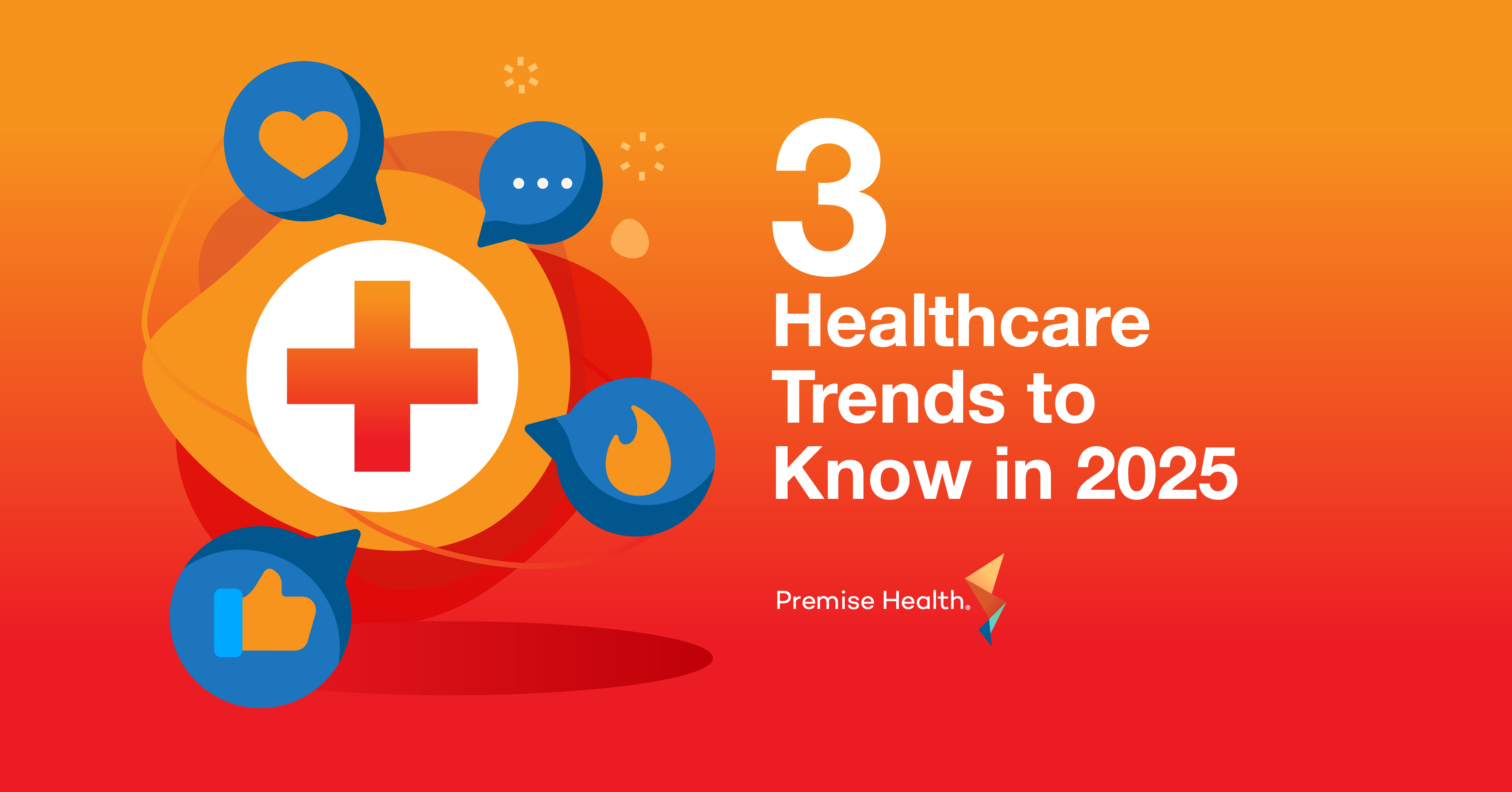How Organizations are Rethinking Their Approach to Employee Healthcare in 2021 and Beyond
The COVID-19 pandemic has profoundly impacted people, industries, and businesses across the world. The healthcare industry especially has been significantly affected, which can be seen in growing trends starting to emerge, such as primary care practices closing their doors, consumers delaying care, and an increased adoption of virtual care solutions.
Premise Health recently hosted its sixth annual Client Forum and wanted to see first-hand how the above trends are impacting its clients, who represent a variety of industries and geographic locations. At the conclusion of day one, the company polled its more than 270 client attendees to learn how they are rethinking their approach to employee healthcare for 2021 and 2022.
With clients located in rural Iowa to metropolitan North Carolina to suburban California, in industries from manufacturing to banking, results from the poll clearly demonstrate there is no one-size-fits-all approach for how organizations will tackle the year ahead. Read on to see what organizations are prioritizing for their unique populations.
Shifting healthcare priorities
When asked to identify top priorities for their organization this year and next, almost all answers could be attributed to the impact of the COVID-19 pandemic. Nearly three-quarters of clients said providing on-demand healthcare options would be critical, along with increasing support for employees diagnosed with COVID-19 and improving access to high-quality care for remote workers. Roughly half of respondents also stated offering a COVID-19 vaccine on campus was a focus area for their teams.

Americans have dealt with more stress, anxiety, and grief in the past year than ever before which makes it no surprise that 73% of employers stated increasing access to behavioral health resources, whether in-person or digitally, would be important to ensure their employees feel supported and cared for in whatever way they need.
While these identified priorities are a reflection of what people have endured recently, some healthcare priorities haven’t changed from previous years – employers are still focused on addressing overall healthcare costs, especially those stemming from downstream care and high-cost members.
Diverse return-to-work strategies
Now that vaccines are available to all Americans over the age of 12, more organizations are thinking through their plans for returning employees to the workplace. When asked when they anticipated returning a substantial portion of their workforces back to the office, clients were mixed on the “right” time.

Those in industries deemed essential, roughly 14% of Client Forum attendees, never went remote during the pandemic. A number of employers are targeting 2021 for their return, with about a quarter stating they have already returned to the office, while another quarter reported targeting Q3. Only 2% are looking at 2022, while 7% reported their workers will be staying permanently remote, a trend growing in popularity across the country.
Evolution of the workplace
The shift to remote work opened the eyes of many organizations, providing an opportunity to recognize just how productive their workforces could be outside of the workplace. Over the past several months, several employers, such as Upwork and Twitter, have announced they’ll continue operating in a permanently remote environment, while others are adopting more of a hybrid approach to offer flexibility for employees. Premise clients were polled on their plans for the future of their workplace and shared a range of responses.

When asked what percentage of their pre-COVID-19 onsite workforce they anticipated returning to the workplace, over 40% stated that 100% of their pre-pandemic onsite employees would be returning to an in-person work environment. The next largest group, 33%, shared that around three-quarters of their workers would be back onsite, followed by 14% of our clients reporting they’d be bringing back half of their workforce, and a much smaller portion, roughly 5%, stating only a quarter of their workforce would be back onsite. Interestingly enough, clients seemed to recognize the value of collaborating in person, as only 2% of our survey respondents said they would remain fully remote.
These insights from Premise clients confirm what it has been seeing throughout the broader healthcare industry. It’s clear that on-demand, virtual care is important to reach dispersed populations, but the future of care isn’t solely digital – Premise believes it will be a hybrid approach of both digital and physical access points, which has led to the creation of the Digital Wellness Center. It’s also clear that impacting costs from downstream care and high-cost members is a top priority for employers. Through its Connected Care+ solutions, Premise is directly targeting those concerns and supporting clients in making positive changes. To learn more about what solutions we offer to address these trends, click here.
Next on industry insights.

How to Futureproof Your Healthcare Benefits
Read the Blog
Why Partnering with an AAAHC Accredited Organization is a Win for Your Workforce
Read the Blog